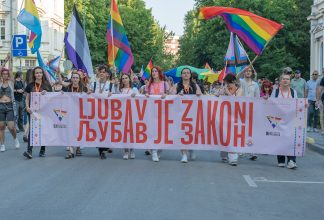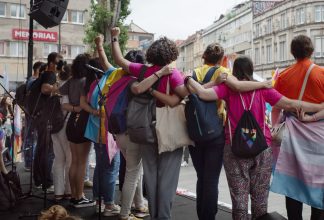Making “Srebrenica – Map of Genocide”
On 11 July 1995, Serb forces that had been besieging the area around the town of Srebrenica (in eastern Bosnia-Herzegovina) overwhelmed the town. Despite the presence of Dutch United Nations troops, and despite Srebrenica having been declared a UN ‘Safe Haven’, the Serb forces captured the town and proceeded to separate the males from the females.
Over the period of the next few days, most of the Muslim male captives were murdered. In addition, many of the female captives were forcibly evicted from their homes in the town, often suffering degrading, inhuman treatment and torture such as rape before their eviction. The UN has declared this an act of genocide, and the ICTY found general Krstic guilty of genocide convicting him on 46 years in prison.
Even though the massacre in Srebrenica is well-documented, the victims live on in a state of silence, with no moves to recognize or compensate for their pain. The governments of Serbia and the RS in Bosnia and Herzegovina have shown little willingness to make moves towards rectifying this, and make few public statements about the crime, nor have they made any concrete moves towards compensating for it. This silence about the crime, and social denial or attempts at justification, serves only to add to the pain of the victims and lays dangerous ground for the future.
Together with Youth Initiative for Human Rights we attempt to increase the awareness about this crime of genocide among the general public of Bosnia and Herzegovina and Serbia and also to foster conditions for further dealing with the recent past in the region of the former Yugoslavia. We do so by making “Srebrenica – Map of Genocide”, together with Youth Initiative for Human Rights and the author Suada Kapic. The map will be printed and distributed free of charge in dailies Oslobodjenje and Nezavisne Novine in Bosnia and Herzegovina and later on in Borba in Serbia. Additionally, the Map will be posted online with interactive categories that allow for viewers/researchers to dig as deep as they need to, to find the data they seek.
The Map will attempt to answer as to why and how such acts are committed. It will learn young generations through education about what must never repeat itself. The map shall spawn lectures, workshops, studies and joint classes for young people attending schools and universities in the region.
Youth Initiative for Human Rights is a regional human rights NGO with programmes in Serbia, Kosovo, Croatia, Montenegro and Bosnia and Herzegovina. Together with Youth Initiative for Human Rights we have organised trainings on the burning issue of dealing with the past for Bosnian youth activists and high school students for the past three years.


